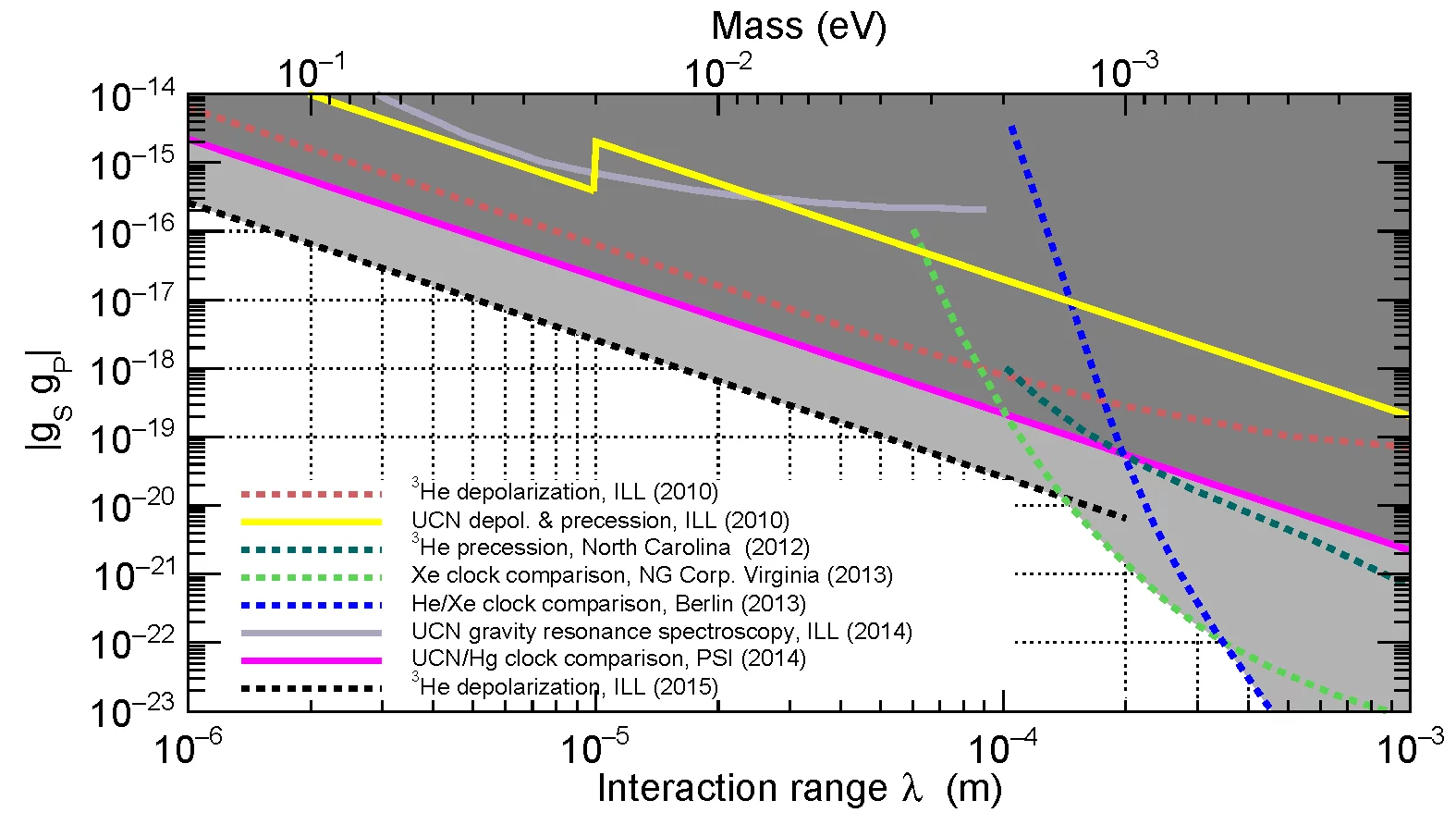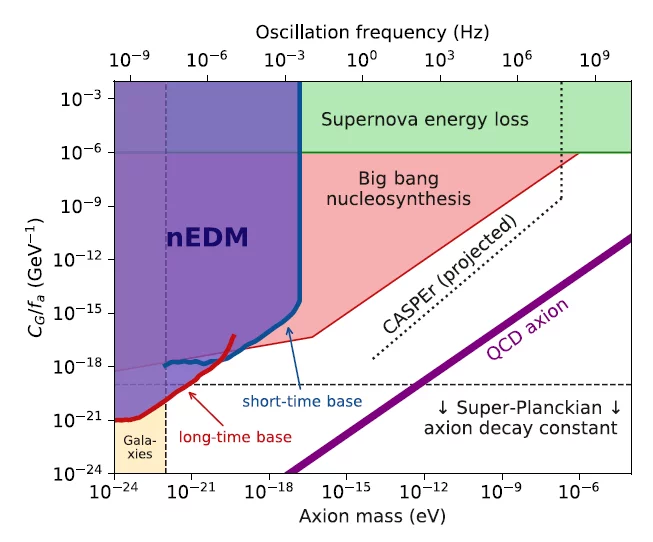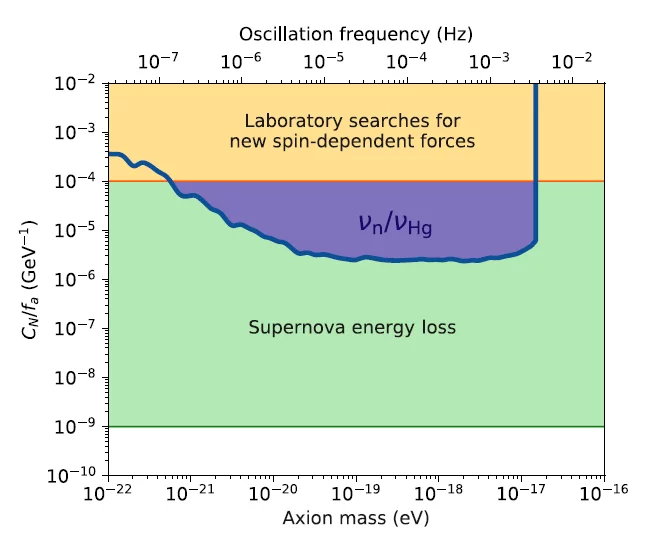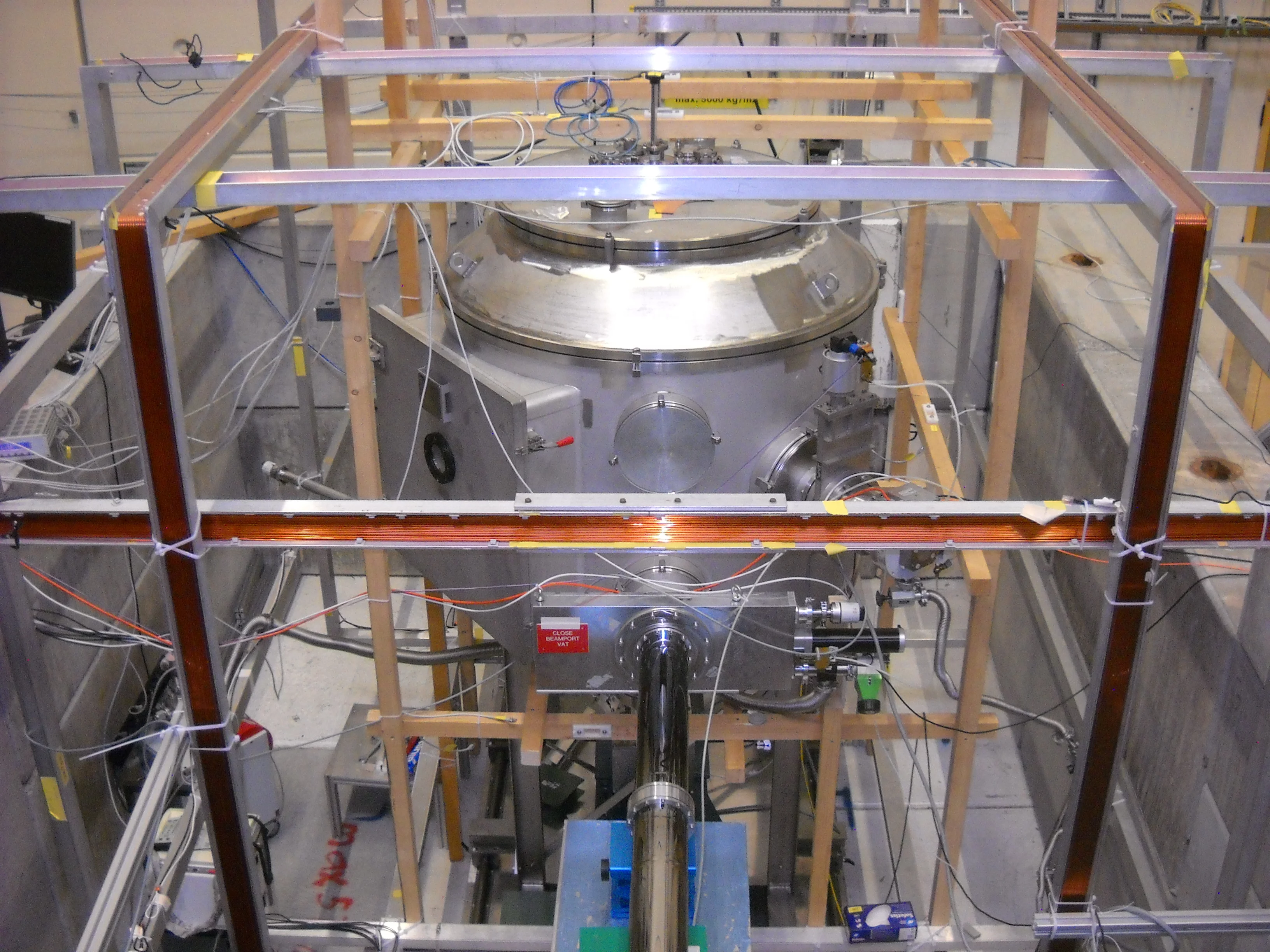The nEDM apparatus at PSI is also an excellent tool to search for signatures of dark matter particles (Roccia S, Zsigmond G, 2021). A potential signal is a shift in the ratio of the spin-precession frequencies of ultracold neutrons (UCN) and the 199Hg atoms of the co-magnetometer. This shift can be interpreted as caused by a possible short-range spin-dependent neutron–nucleon interaction mediated by axion-like particles and was studied with high precision (Figure 1, Afach et al. 2015). In a second effort, the aforementioned ratios measured during the nEDM data-taking were analyzed as an axion-induced oscillating electric dipole moment of the neutron, and as an axion-wind spin-precession effect (Figures 2 and 3, Abel et al. 2017).
So-called disappearance experiments, which can also be conducted with UCNs, are a further way to search for dark matter signatures. It was hypothesized in the fifties by Lee and Young that there could be a mirror copy of the weakly interacting particles, restoring parity conservation on the global level. Since then, various theorists put forward the idea that oscillations between a neutral SM particle, such as the neutron, and its mirror counterpart could help to explain various issues in physics, including dark matter. Various searches for oscillations of neutrons to mirror-neutrons were conducted using the nEDM apparatus. Limits were achieved for the cases of zero mirror-magnetic field (Ban et al. 2007) and of assuming non-zero mirror magnetic fields (Altarev et al. 2009) originating from mirror photons. Recent reports of anomalous signals sparked world-wide attention and initiated further search at PSI yielding new limits (Figure 4, Abel et al. 2020). A new dedicated apparatus has been installed at beamport West-1 to continue this effort, see Figure 5. and Ref. N. J. Ayres et al. 2022






